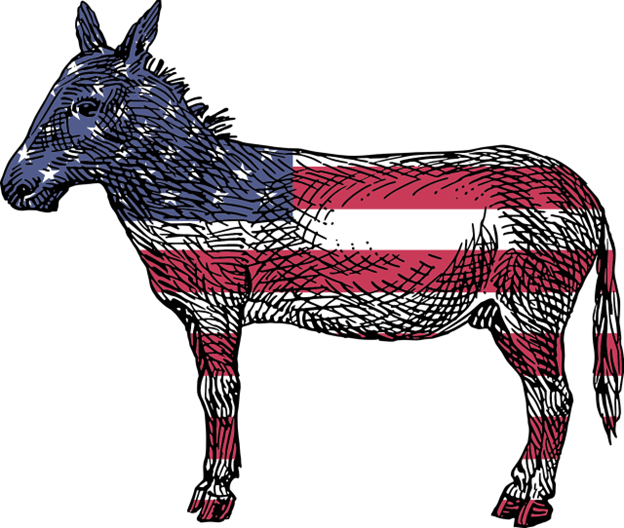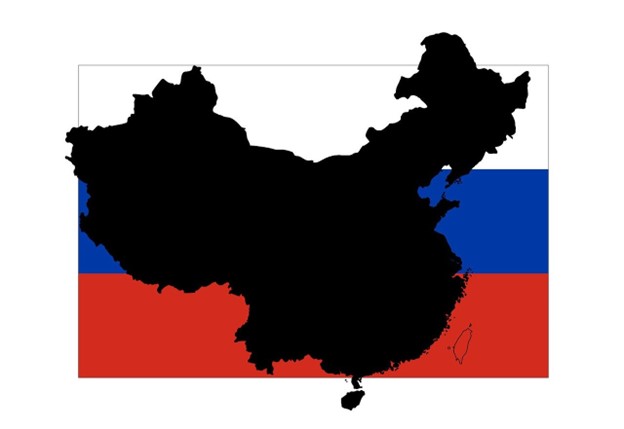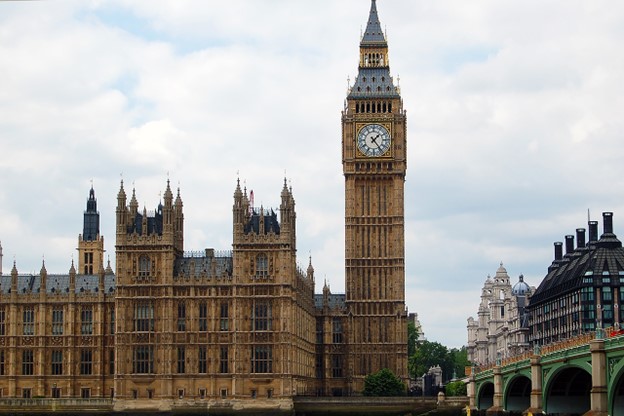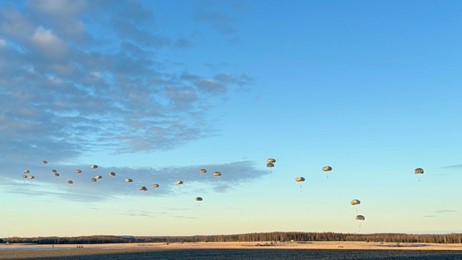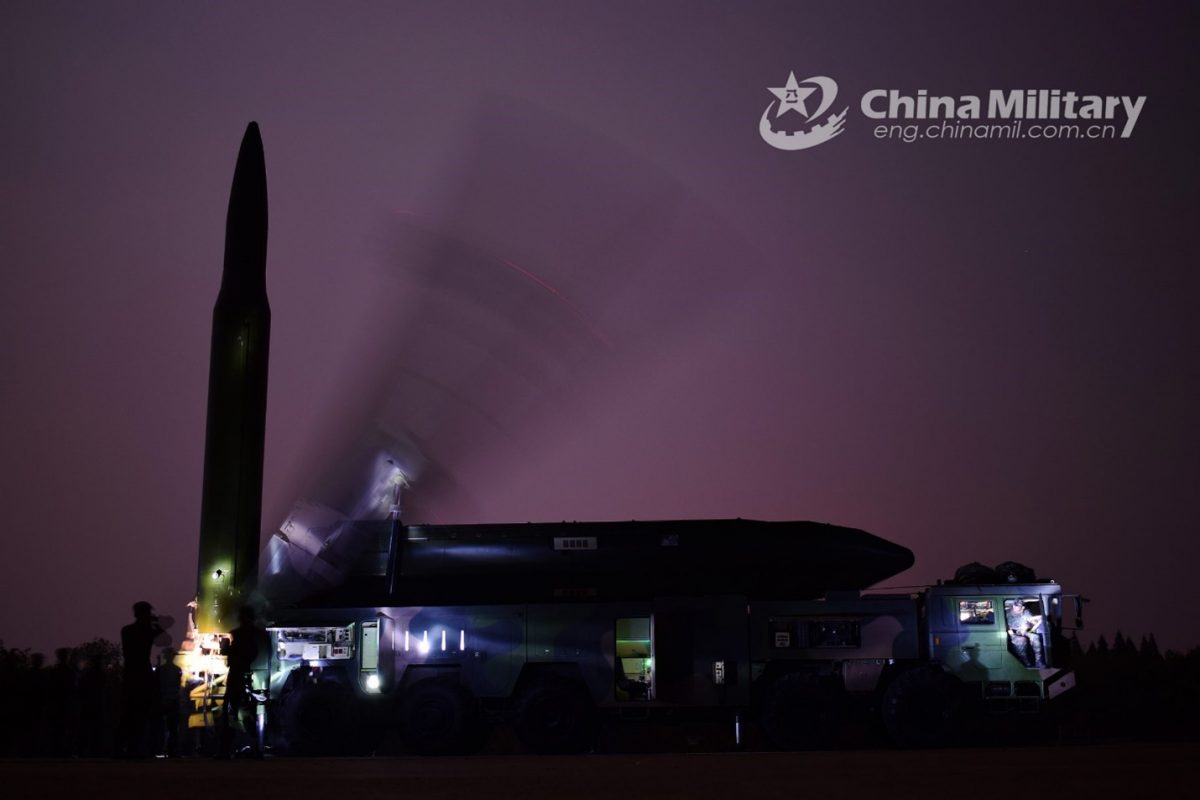December 10, 2024, As Delivered by Deputy Secretary of Defense Kathleen H. HicksRoyal United Services Institute (RUSI), London, The United Kingdom
Every war offers a window into how future wars will be waged. Unquestionably, Russia’s war against Ukraine has much to tell us.
For instance, we’re seeing novel applications of both old and new technologies, some of which will be significant factors in how wars of the future will likely be fought.
The war has had major consequences not only for Europe, but also other regions — especially the Indo-Pacific, where over the last four years we’ve sharpened our focus, and strengthened our posture and capabilities, in recognition of a long-term strategic competition with the People’s Republic of China.
We’ve done so recognizing that competition does not mean conflict — because no one should desire the global devastation that such a war would bring.
That’s why we seek to prevent conflict, by deterring PRC aggression against the United States and our allies and partners, and by defending our core national security interests. And key to deterrence is being able to win if called to fight.
Of course, there are differences between the regions and their security environments. But there are also similarities, and takeaways that are transferable. We’ve seen that clearly, and we know our competitors have seen it.
So, a few quick stipulations up front.
First, to be clear, I’m focused today on changes in war’s character, not its nature. I have no need to dispute Clausewitz that war is violent, it is foggy, full of friction, fear, uncertainty, and chance. There has been so much needless bloodshed in Russia’s war against Ukraine, and such a high cost paid, especially by the people of Ukraine. That’s one reason why war is always the last thing we want.
Second, human beings have a perfectly-imperfect record of predicting the future, let alone the week. So I’m careful here to avoid sweeping statements that leave no room for nuance. Wisdom requires knowing your limitations, after all, and there is irreducible uncertainty in international security affairs.
When future-casting, it’s tempting to proclaim a paradigm shift — even though we’ve all heard those that were premature, or still haven’t panned out.
It’s also tempting to critique heralds of revolution, where evolution seems more evident.
I won’t give in to either temptation today.
There’s a tendency, in our field, to either “fight the last war,” or to suffer from “next-war-itis.” I have seen the pendulum swing between these mentalities since my first job in the Pentagon over 30 years ago. Instead of picking sides, we must inhabit the tension between them. If we can, success is not guaranteed, but it’s more within our grasp. If we can’t, failure is all but certain.
That’s because technology, warfare, and the operational concepts where they intersect are never static. They are always in motion. And while it can take years or even decades to fully grasp their consequences, it behooves us to discern key themes as soon as we are able. After all, doing so can save lives, secure national interests, and even deter future conflict.
So here are four early insights from the war in Ukraine that I believe have impact for the character of warfare.
The first insight is that quality intelligence is an enduring advantage. Prior to February 24, 2022, few countries expected Russia to further invade Ukraine; we knew otherwise.
Thankfully we saw the enormous build-up of Russian forces early. We had enough confidence in the indications and warnings, and enough credibility, to disseminate the information and rally our friends and allies. Not everyone believed it at first. But those who did were better prepared.
The second insight, which was evident soon after the wider war began, was this: You can have all the elements of an advanced military on paper, but if you can’t bring it all together into an integrated system-of-systems, if you don’t have consistent operational know-how, winning is tough.
We saw this clearly in Russia’s early battlefield failures, and it’s still worth noting almost three years later.
It’s not as though Russia’s military was inexperienced in modern warfare, with operations under their belts from Chechnya, Georgia, Syria, and even Ukraine starting in 2014.
But Ukraine had been working with the United States and other partners like the U.K. since then, training to defend itself. Those efforts paid off early.
It’s a reminder of an enduring reality: readiness, training, and operational art — especially on how to aggregate systems in depth across time and space — are often more important for military power than numbers or technology alone. Indeed, a military force can add up to less than the sum of its parts.
Historically, that kind of integration and ability to operate jointly is a relative strength of the U.S. military and our closest allies like the U.K. And we’re always getting better, both individually and together, by constantly marrying new operational concepts with game-changing capabilities.
We’ve of course seen Russia adapt and improve with time, which brings me to a third insight: Protracted warfare is alive and well, even among advanced militaries.
As RUSI scholars noted two years ago, Putin planned to take over Ukraine within 10 days. To date, he’s missed his target timeline 100 times over. He underestimated Ukraine’s will to fight, and ability to innovate — and frankly, so did many in the west. Even with the best intelligence apparatus in the world, you won’t always get everything right.
The clear takeaway is, no one should underestimate the ability of an educated, networked, capable society to self-organize and resist aggression.
Those societal strengths in Ukraine have made their resistance even more challenging for Russia. The Ukrainians are showing how effectively a smaller adversary can tie down a larger one, with the right capabilities and support.
A big reason why is the fourth insight, which is that alliances and partnerships are an asymmetric advantage, especially when the free world comes together: to provide security assistance, such as air defenses, artillery, vehicles, munitions, and more; to impose costs, including with the many economic tools at our disposal; and to defend the rules-based international order that’s had so much benefit to so many for so long.
From NATO to AUKUS and beyond, the United States and the U.K. are fortunate to be among dozens of like-minded friends and allies who are partners of choice.
We share values. We train together deeply. We provide each other access, bases, and overflight. Our capabilities are seamlessly interoperable and increasingly interchangeable. Our supply chains strengthen one another.
That’s the result of decades — in some cases centuries — of mutual investment in our relationships. We can never take that for granted. And that’s particularly true of this special relationship.
Not every country enjoys these advantages. Our competitors undoubtedly wish they did.
Because, long wars are hard to fight without many friends.
And they’re even harder to win when you’re stuck with bedfellows of last resort.
Whereas genuine, enduring alliances afford a unique sense of resilience.
It’s an ad-hoc arsenal of autocracies that has kept Russia in the fight so far. Despite the impact of what Putin cobbled together, a willingness to send parts, weapons, and troops doesn’t mean everyone’s getting along — although it’s still concerning to see. More serious collaboration would be even more concerning.
For our part, we are rebuilding our arsenal of democracies, plural, because our alliances make our industries stronger.
Perversely for Russia, Putin’s aggression led to clearer, more public conversations about the transatlantic defense industrial base and the challenges of capability production at scale, enabling us to make necessary investments to get after those challenges, like:
- maximizing production of key munitions — including newer, lower-cost munitions — for a range of warfighting scenarios;
- investing in our shipbuilding and submarine industrial base, which also matters for AUKUS;
- using on-shoring and friend-shoring to secure supply chains, from critical minerals to microchips; and,
- expanding co-development, co-production, and co-sustainment with allies and partners.
We’re doing all this because production is deterrence. And while the engines of production never spin up to 100 percent overnight, the war in Ukraine galvanized democratic societies to jump-start their industries and deepen their stockpiles to better deter aggression and prepare for the future.
So what should these insights mean for the Indo-Pacific, and the PRC?
For one, Moscow’s early battlefield struggles should be deeply concerning for Beijing. This is especially true because the PLA is far less experienced at modern warfare than the Russian military; the PLA hasn’t fought a war in 40 years.
Meanwhile, Ukraine’s example of resistance and innovation against an aggressor should also be appreciated clearly — on both sides of the Taiwan Strait, in the South China Sea, and elsewhere.
If the PRC were to pursue aggression against a neighbor, it would likely find what Russia found in Ukraine: that both sides must be prepared for a drawn-out, protracted fight — where the costs for all only go up over time.
And the power of what like-minded friends and allies can do together is also on clear display in the Indo-Pacific, where we’ve seen what Secretary Austin has called “a new convergence” of our allies and partners around a shared vision of security, from Northeast Asia down to Australia and the Pacific Islands.
Nowhere is that convergence clearer than in AUKUS, where we’re working closely with our British and Australian allies: to field algorithms that are already enhancing anti-submarine warfare capabilities; to launch U.K. torpedoes from U.S. platforms, and vice versa; and to advance our capabilities in hypersonics and combined autonomy, among many others.
Again, an instigator of conflict in the Indo-Pacific would find the same outcome Moscow has found in Europe: that military aggression won’t achieve your objectives quickly. That you will become increasingly isolated. And that, above and beyond the military consequences, the free world can impose severe economic and reputational costs.
In such a conflict, an aggressor may find that global goodwill evaporates quickly, because most countries don’t want to be associated with a nation that bullies or invades its neighbors — no matter how much they’ve been debt-trapped.
Of course, not every lesson from Ukraine can or should translate to the Indo-Pacific, or elsewhere. There are noteworthy regional differences.
For example, the Indo-Pacific doesn’t have a NATO, nor do we seek it to. Instead, there’s something even better suited to the region: an organic, broad community of nations that wants the Indo-Pacific to remain free, open, stable, peaceful, and prosperous for everyone. That’s what America and our allies and partners want, too.
Another difference: Taiwan is an island 110 miles off the coast of the PRC mainland. In that respect, Russia had it easier — since an amphibious landing is the world’s hardest military operation — but still the Kremlin failed to take over Ukraine like they’d planned.
While the PRC claims there are no similarities, we know they’re watching this war closely, and taking away lessons — although, observing lessons is very different from implementing lessons. So we will keep a close eye on what they learn. And we’ll remain ready to deter aggression.
It’s clear why Beijing is watching this war closely: because after almost three years, we have seen the character of warfare change.
At first, emerging capabilities and concepts used in Ukraine — and smaller wars prior — seemed like minor adaptations, enabled by a global diffusion of commercial technology. They’ve since become more broad-based shifts embedded into the conduct of the war. And these trends will surely echo in future wars for at least the next generation.
One trend is how commercial technology and approaches, with few modifications, are proving useful again and again, from proliferated commercial satellites to small airborne drones to cloud computing. Decades after talk of “network-centric warfare” first appeared, we’re watching what happens when it’s applied at scale. And we’re seeing how dual-use technologies and talent can help deliver it.
Widespread connectivity and widespread electronic warfare have created new opportunities and new challenges for maneuver, dispersal, sensing, and concealment. If you can be seen, you can be hit. That’s driving innovation in operational concepts, capabilities, and even force design.
It’s also a key factor in our iterative development, deployment, and use of Combined Joint All-Domain Command and Control, or CJADC2, which draws upon America’s current global lead in software and responsible AI to give us and our allies and partners a clear decision advantage.
Because, when we can see ourselves and potential adversaries clearly — when we make the battlespace more transparent than ever, for us — we can sense, make sense, and act faster, while still maintaining human judgment and responsibility over use of force: the best of both worlds.
Another trend, which some call precise mass, is the use of lower-cost attritable autonomous capabilities alongside more traditional forces to increase the scale and accuracy of surveillance and attacks. The Russia-Ukraine war didn’t start this trend, but it did accelerate it. And it’s shown how precise mass contributes to magazine depth, which is critical in protraction scenarios.
Today, DoD’s Replicator initiative is one way we’re embracing precise mass for the future, and putting it into production at speed and scale. Replicator’s initial focus is fielding multiple thousands of attritable autonomous systems, in multiple domains, by August of 2025. It’s a pathfinder that is not only on track to meet this operational goal, but also to speed the scaling of responsible autonomy more broadly.
And we’ll continue to adapt as our competitors and adversaries do the same. That’s partly why Replicator’s second iteration will scale systems to counter the threat of small airborne drones, in line with our recently-released Strategy for Countering Unmanned Systems.
Precise mass exemplifies a fusion of old and new: throughout history, mass was often decisive in warfare, until Cold War-era tech breakthroughs provided the United States and European allies an opportunity to trade mass for greater precision. Now, the ubiquity of commercially-available precision has made mass matter yet again, even as precision continues to improve military efficacy and efficiency, and contribute to the protection of non-combatants.
The fusion between old and new technology in Ukraine — like small drones enabling real-time artillery correction — also represents a broader trend we’re likely to see in future wars.
While each kind of tech has its community of producers and evangelists — like the Bomber and Fighter Mafias of old, each one claiming they matter most — the reality is that both matter: we need uncrewed systems, and 155mm artillery rounds. And both are needed at scale.
Future full-spectrum wars will likely be characterized by high-low mixes of capabilities — some large, expensive, exquisite systems, collaborating with far more systems that are small, smart, cheap, and used en masse. And the important innovations we often see in times of conflict will likely come at the intersection of the two.
The best militaries will master both. And the greatest advantage is likely to accrue to those who are able to combine extant and emerging capabilities to most effectively achieve their operational objectives.
At the same time, the Russia-Ukraine war reaffirms that technology, whether old, new, or both, is seldom itself determinative.
For instance, we’ve repeatedly seen Russia raining down joint firepower strikes to try to capture Ukrainian territory. That alone didn’t get the job done, even when they were expending their best munitions. Remember: they used hypersonic missiles to virtually no strategic effect. Ukraine even took some of the hype out of hypersonics when a Patriot battery intercepted a Russian Kinzhal last year. Make no mistake: taking and holding territory still requires a capable ground force.
To determine which militaries would win a future war, look at the quality of their people, their existing capabilities, and their emerging technologies — and look at how they fuse all three into new ways of fighting, operating, and adopting innovation at speed and scale.
Today, no one does that better than the U.S. military and allies like the U.K. — and we’ve got the best people doing it, to boot. That will drive and sustain our military edge not just tomorrow, but for years and decades to come.
I’ll conclude today with two key tenets for policymakers that I hope we all take away for the long-haul. Both go beyond the character of warfare.
First, while I can’t say how the Russia-Ukraine conflict will end, everyone should remember that appeasement only emboldens aggressors.
Those who would say “it’s just Crimea,” or “it’s just the Donbas,” should remember those who said almost a century ago, “it’s just Austria,” and “it’s just the Sudetenland.” Remember the price paid by so many when Poland came next.
Second is that, as individual democracies and as democratic allies, we have what it takes to outlast and prevail over any who would see our democracies die.
To be sure, that requires the sustained effort of committed citizens, day in and day out, to preserve self-government, to build trust, and to uphold democratic principles and the rule of law.
That is no small thing. And we cannot take it for granted.
The years to come will test our mettle. They will try our souls.
But we need not wither against the howling winds of autocracy that sweep the globe.
Illustration: Pixabay


